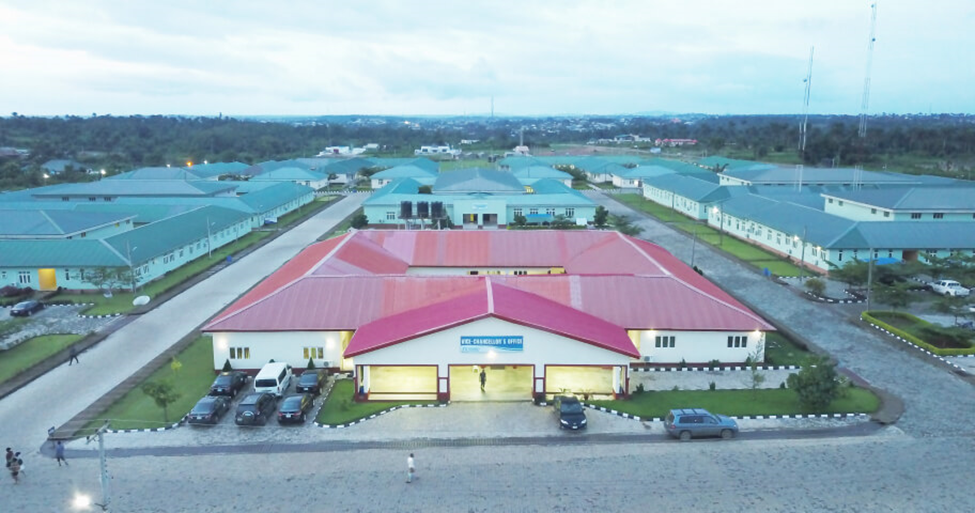Plant landscapes to minimise water usage.

Key Initiative: Drought-Tolerant Planting Strategy at Redeemer’s University
Introduction:
In line with Redeemer’s University’s commitment to environmental sustainability and water conservation, the university has implemented a comprehensive initiative to plant drought-tolerant plants across its campus. This initiative aims to reduce the amount of water used for landscaping, while also enhancing the natural beauty of the university’s grounds. By focusing on plant species that thrive in dry conditions, the university can significantly cut down on irrigation needs and promote a more sustainable approach to campus greening.
Current Planting Efforts:
Redeemer’s University has already taken important steps to establish drought-tolerant plants in key areas around campus. Some of the plants currently being used include:
- Palm Trees: Palm trees are well-suited to dry environments and are used widely across campus for their low water requirements and aesthetic appeal. They provide shade and contribute to the tropical landscape design that aligns with the natural climate of the region.
- Aloe Vera Plants: Known for their medicinal properties and ability to thrive in arid conditions, Aloe Vera plants have been introduced in several landscaped areas. These plants are highly resilient to drought and require minimal care once established, making them ideal for sustainable landscaping.
- Agave Plants: Agave, similar to Aloe Vera, is a hardy plant that requires very little water. It is being planted strategically in areas where long-term sustainability is a priority due to its robust nature and ability to withstand prolonged dry periods.
Future Plans for Expansion:
To build on the progress already made, Redeemer’s University plans to expand its drought-tolerant planting initiative by incorporating a wider variety of species and extending the effort to new areas of the campus. Key components of the future plans include:
- Introducing Native Drought-Tolerant Species: In addition to exotic species, the university plans to collaborate with local botanical experts to identify and plant native drought-tolerant plants that are well-adapted to the local climate. These may include species like Euphorbia tirucalli (pencil tree) and Leucophyllum frutescens (Texas sage), which can thrive in dry conditions and contribute to a more sustainable landscape.
- Expanding the Green Zones: The current drought-tolerant planting zones will be expanded to other parts of the campus, including new dormitory areas, administrative buildings, and research facilities. This will help create a cohesive green campus environment that is both environmentally friendly and visually appealing.
- Educational and Community Involvement: As part of the initiative, the university will launch awareness programs and workshops to educate students, staff, and faculty on the importance of water conservation through sustainable landscaping. The goal is to encourage community participation, such as through planting events and maintaining drought-tolerant gardens as part of student projects.
- Drip Irrigation and Rainwater Harvesting: To further support the sustainability of the initiative, Redeemer’s University will expand the use of drip irrigation systems in areas where minimal irrigation is necessary. Drip irrigation allows for targeted watering, reducing water waste significantly. In addition, the rainwater harvesting systems currently in place will be optimized to ensure that rainwater collected from building roofs is effectively used for the irrigation of drought-tolerant plants during dry periods.
- Monitoring and Maintenance: A system for monitoring plant health and water usage will be developed. The Facilities Management Department will collaborate with the Office of Sustainability to track the effectiveness of drought-tolerant landscaping and adjust planting and maintenance practices as necessary to ensure that water use remains minimized while keeping the campus visually attractive.
Environmental Impact and Sustainability Goals:
This key initiative aligns with Redeemer’s University’s broader sustainability goals, particularly in water conservation and efficient resource management. The university expects this strategy to yield several benefits, including:
- A significant reduction in water consumption for landscaping by up to 40%.
- Enhanced biodiversity by introducing a variety of drought-tolerant species.
- Lower maintenance costs associated with water usage and plant care.
- Creation of a sustainable, green campus environment that contributes to both ecological health and the aesthetic beauty of the university.
Conclusion:
Redeemer’s University’s commitment to sustainability is clearly demonstrated through its ongoing efforts to introduce and expand drought-tolerant plant species on campus. The university is poised to become a model of sustainable landscaping in the region, showing how a thoughtful approach to plant selection can greatly reduce water usage while enhancing the natural environment. With continued efforts to engage the community, utilize advanced water management techniques, and expand planting zones, Redeemer’s University will continue to lead the way in promoting environmental stewardship on its campus.
Latest News
-
Redeemer's University Launches New Initiative for SDG 1
Published on: October 22, 2024
-
New Study Shows Effective Measures in Poverty Reduction
Published on: October 19, 2024
-
Global Summit Addresses the Future of Sustainable Development
Published on: October 15, 2024
Picture Speaks

